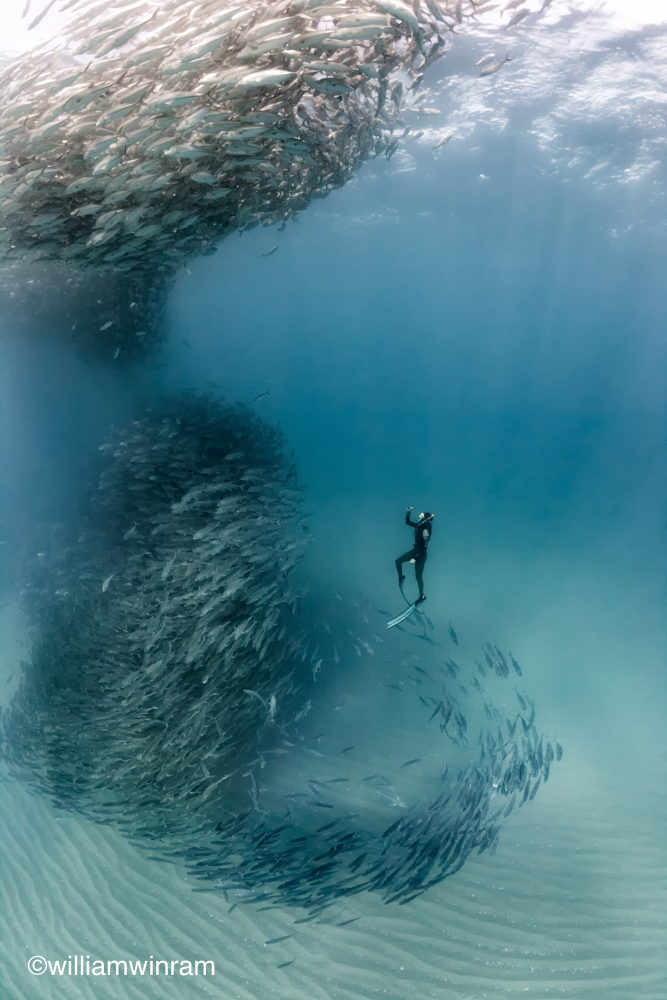The Ocean is probably the biggest business in the world. It is the world’s seventh largest economy with a “GDP” equivalent to US$2.5 trillion (about 5% of global GDP). Its key assets have an overall value of more than US$24 trillion (WWF (2015) Reviving the Ocean Economy). The global Ocean economy could more than double by 2030 (OECD: the global Ocean Economy in 2030). Investment in sustainable infrastructure of up to US$90 trillion is being urged over the next 15 years worldwide to fight climate change and deliver on the sustainable development goals. Much of this will be along coastlines and in Ocean sectors such as aquaculture, tourism, marine energy and offshore installations. (The New Climate Economy 2016) These opportunities for investment and economic growth do not have to be locked into a pathway that is detrimental to the health of the Ocean.
The Ocean provides half the oxygen we breathe and has absorbed a quarter of our CO2 emissions and 90% of the additional heat from those emissions (IPCC 5th Assessment Report). It directly supports the livelihoods of more than 3 billion people and puts food on the table for more than 2.5 billion around the globe (FAO 2014)
But the Ocean is in danger. A business-as-usual approach will likely cause the disappearance of the world’s coral reefs by 2050 (WRI report ), resulting in the loss of food, jobs and storm protection to several hundred million people. Consider the impact that this will have on businesses when annually more than 350 million people travel to the coral reef coasts of the world: it would equate to a potential loss of US$30 billion per year from lost global tourism revenue (See here). Healthy coral reefs reduce 97% of wave energy, acting as a barrier from storms; for example, if all the coral reefs around Bermuda were lost, the financial ramifications of property damage from wave action would increase from US$500 million to US$2 billion in just ten years. (See here)
It is not too late to solve this crisis. The Ocean is amazingly resilient and could recover, but for that to happen, each and every one of us needs to play a part.
Developing a better business plan to secure a healthy Ocean 
A business-as-usual trajectory forecasts a negative long-term financial outlook for the Ocean. It would mean an earth system-level collapse that would result in immeasurable harm for people and for the planet.
Businesses are already incurring the costs of climate change, with increasing supply-chain disruptions from extreme-weather events, rising sea levels and ocean acidification, falling crop yields, and increasing desertification. At the same time, the world’s poorest and most vulnerable – those who are disproportionately affected and least equipped to cope – are being hit the hardest.
For business leaders, the transition to “blue” business practices – like the transition to a net-zero greenhouse gas emissions economy – is a historic and unprecedented opportunity. If managed responsibly, fairly and collaboratively, it could bring economic benefits to countries at all levels of income, including new jobs, a cleaner Ocean, better health, abundant biodiversity, lower poverty levels and greater global food security.
However, the Ocean can regenerate and replenish itself, if we help it.
- Reducing CO2 emissions can slow the impact of Ocean acidification. Acidification could have devastating consequences for the global seafood industry, which is worth US$190 billion and depends on a healthy Ocean.
- Stopping the 8 million tonnes of plastic entering the Ocean each year means that we will avoid reaching levels of 1 kg of plastic per 3 kg of fish by 2025.
- Studies have shown that creating marine protected areas increases the biomass (weight) of fish by 446%, while fish abundance increases by 166%, species size increases by 26% and there are 21% more types of fish.
- Illegal fishing is costing us US$23 billion per year in lost income. Ending this practice and ensuring a fully traceable and sustainable seafood supply chain has great investment potential. Consider that the demand for fully sustainable seafood has grown ten times faster than the market for conventional seafood in the last decade, and in 2015 alone the global sustainable seafood market hit US$11.5 billion in retail sales.
- Protecting 30% of the ocean has been estimated to cost between US$ 223-228 billion, but it has been estimated that the financial net benefits from the increased ecosystem goods and services (once all costs have been taken into account) range from US$490 billion to US$920 billion by 2050.
- The UN estimates that worldwide, fish provides about 3 billion people with almost 20% of their intake of animal protein, and 4.3 billion people with about 15% of such protein. 90% of fish stocks are now either fully fished (61.3%) or overfished (28.8 per cent) (FAO 2014). A FAO and World Bank report in 2009 estimated that poor fisheries management means that global marine fisheries are worth US$50 billion per year less than what they could be– a sum equivalent to more than half the value of the global seafood trade.
- 80% of marine plastic pollution originates from land-based sources. If the rate at which plastic debris enters the Ocean goes unchecked, it is possible that the Ocean could contain 1 tonne of plastic for every 3 tonnes of fish by 2025, and more plastic than fish by 2050. The plastic debris floating on the ocean surface accounts for only 5% of all the plastic trash dumped into the sea; the other 95% is submerged beneath the surface.
- If the same amount of heat that went into the top 2 kms of the Ocean between 1955–2010, had gone into the lower 10 kms of the atmosphere, then the Earth would have seen a warming of 36°C.
